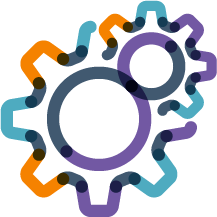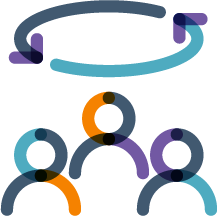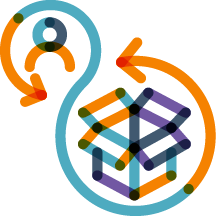The Professional Scrum™ Competencies
Scrum.org has created these Professional Scrum Competencies to help guide an individual’s personal development. They also provide an excellent model for assessing the capabilities of a team within an organization. Everything that Scrum.org does, including our courseware, certification tests, and content, is designed with the competencies in mind. Building proficiency with Scrum starts with the fundamentals, Understanding and Applying the Scrum Framework as the foundation which the other competency areas build upon.
The competencies and their Focus Areas apply to the Scrum Team (Product Owner, Scrum Master, and Developers) and other organizational roles, such as Agile Leaders. Organizations can benefit from using a common understanding of the competencies and focus areas to evaluate and balance their team’s proficiencies based on their unique needs.
View how Scrum.org Professional Scrum Training Courses map to the Focus Areas.
Explore the Competencies

Understanding and Applying the Scrum Framework
Scrum helps people and teams deliver value incrementally in a collaborative way. As an agile framework, Scrum provides just enough structure to integrate the framework into how the team works and requires teams to add the correct practices for their situation as they build out the processes. Scrum is based on empiricism, self-management, and continual improvement. The competency includes the focus areas of:
Empiricism, Scrum Values, Scrum Team, Events, Artifacts, Done, and Scaling.

Developing People and Teams
Scrum is all about working together to deliver products with greater agility. To achieve success, the members of the Scrum Team may take on different stances as they work with people inside and outside of the team. These stances are focus areas for this competency and include:
Self-Managing Teams, Facilitation, Leadership Styles, Coaching, Mentoring and Teaching.

Managing Products with Agility
Products are how Scrum Teams provide value to their users and the organizations they work for and with. A Product has a clear goal, stakeholders, and users. The value of the product is measurable. Effectively managing products in an agile environment requires the following focus areas:
Forecasting & Release Planning, Product Vision, Product Value, Product Backlog Management, Business Strategy, and Stakeholder & Customers.

Developing and Delivering Products Professionally
Using Professional Scrum results in high-quality products delivered iteratively and incrementally with relatively high frequency. These products meet the needs of stakeholders and customers and provide flexibility for both early value realization and adaptation to changing needs. To meet these needs means that the Products should be developed in a certain way. The following focus areas support this competency:
Emergent Software Development, Managing Technical Risk, Continuous Quality, Continuous Integration, Continuous Delivery, and Optimizing Flow.

Evolving the Agile Organization
The majority of Scrum Teams are operating within an organization. For Scrum Teams to succeed, they require that organizations reduce friction and provide the freedom that they need to be self-managing and create solutions closest to the work. To support this agility, organizational structure, incentives, human resource practices, and governance must enable rather than deter agility. The focus areas include:
Organizational Design and Culture, Portfolio Planning, and Evidence-Based Management.